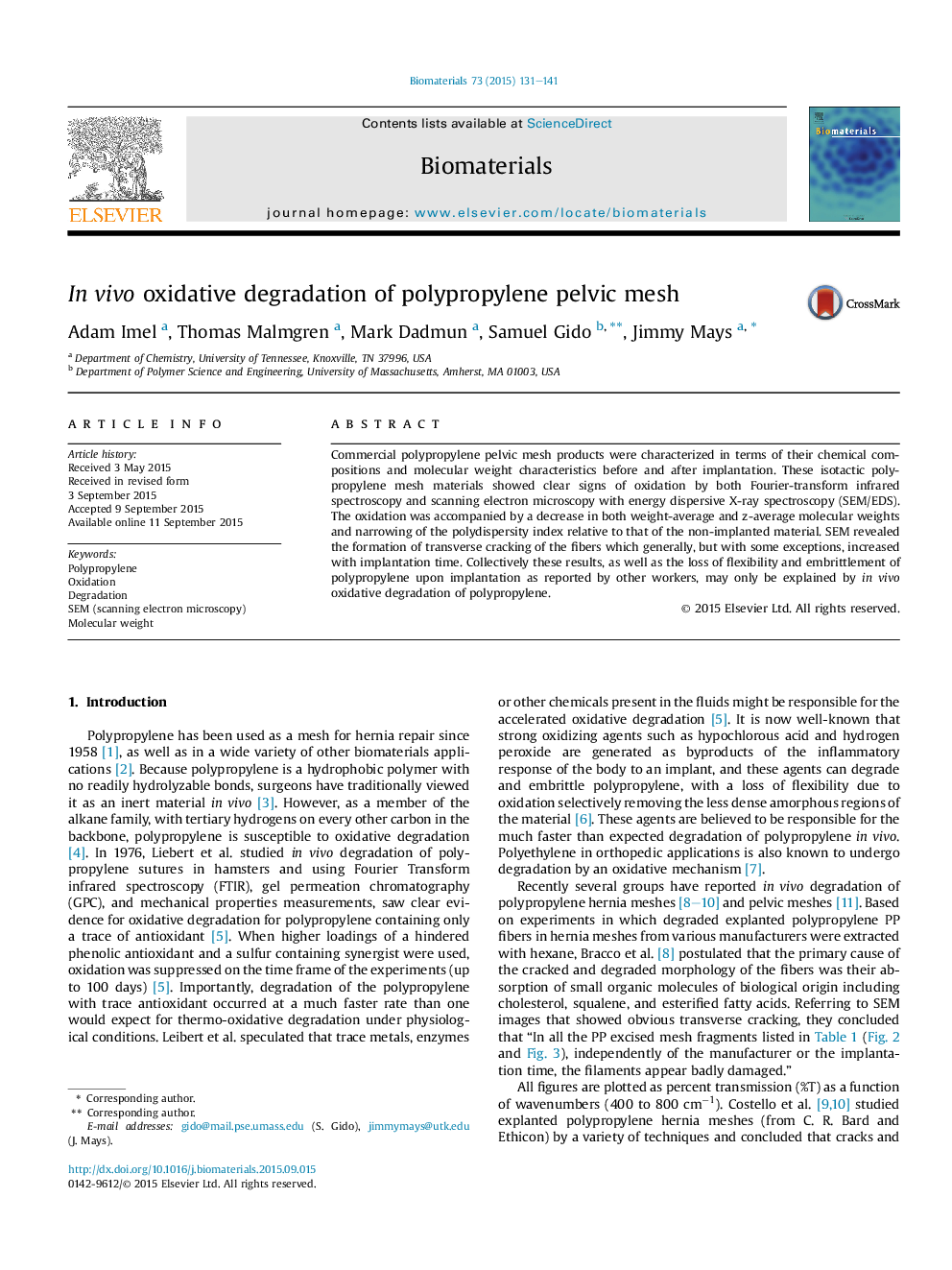| Article ID | Journal | Published Year | Pages | File Type |
|---|---|---|---|---|
| 5524 | Biomaterials | 2015 | 11 Pages |
Commercial polypropylene pelvic mesh products were characterized in terms of their chemical compositions and molecular weight characteristics before and after implantation. These isotactic polypropylene mesh materials showed clear signs of oxidation by both Fourier-transform infrared spectroscopy and scanning electron microscopy with energy dispersive X-ray spectroscopy (SEM/EDS). The oxidation was accompanied by a decrease in both weight-average and z-average molecular weights and narrowing of the polydispersity index relative to that of the non-implanted material. SEM revealed the formation of transverse cracking of the fibers which generally, but with some exceptions, increased with implantation time. Collectively these results, as well as the loss of flexibility and embrittlement of polypropylene upon implantation as reported by other workers, may only be explained by in vivo oxidative degradation of polypropylene.
